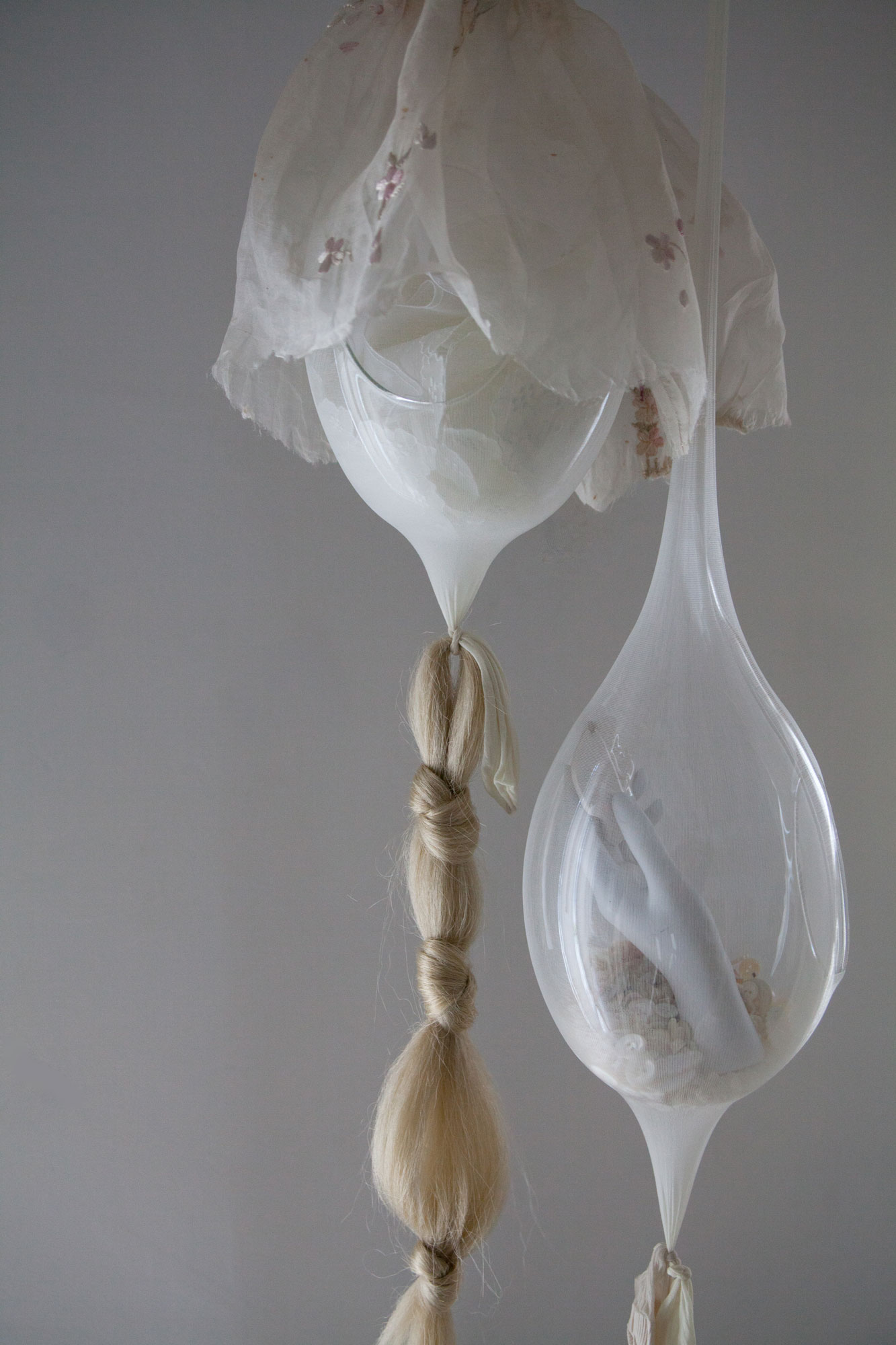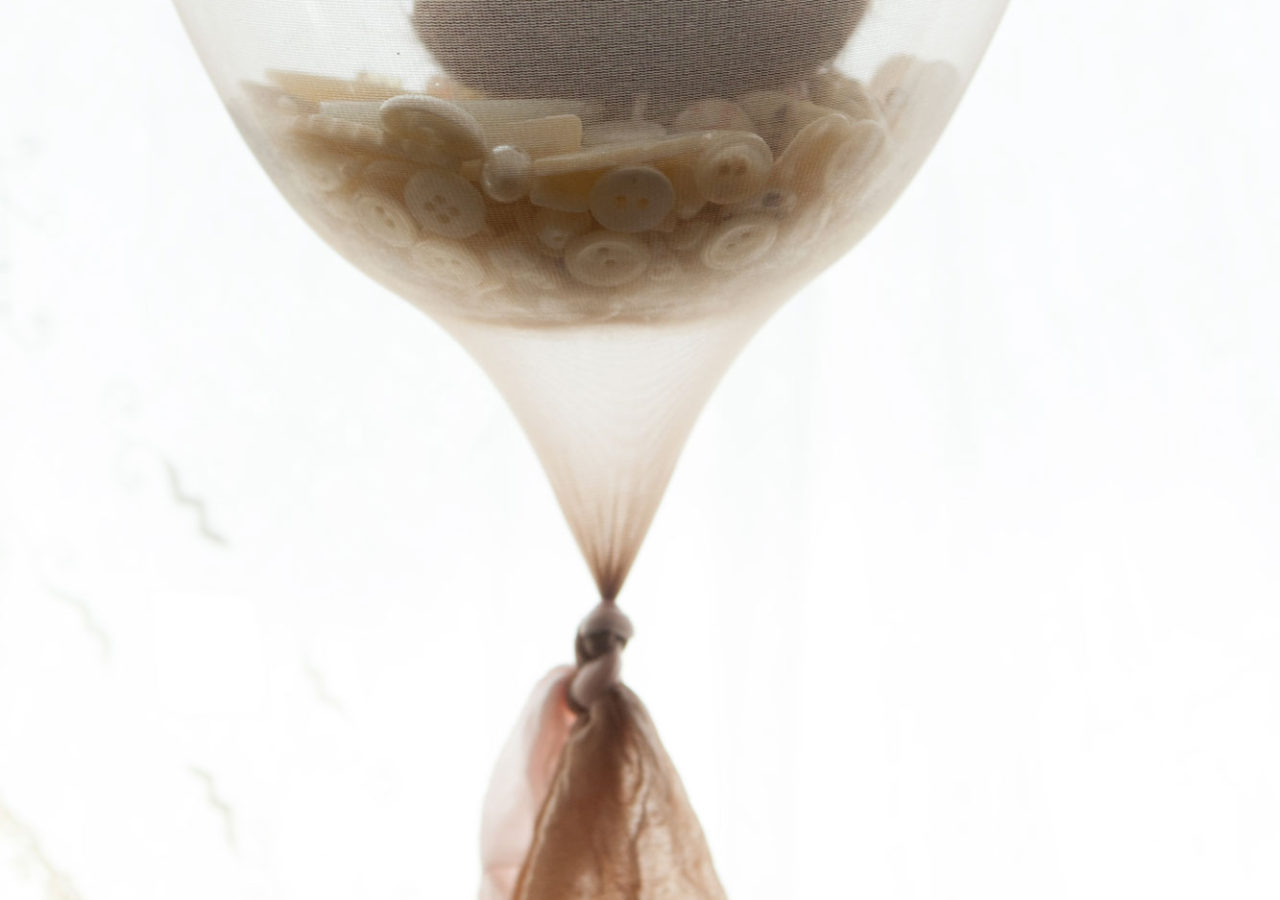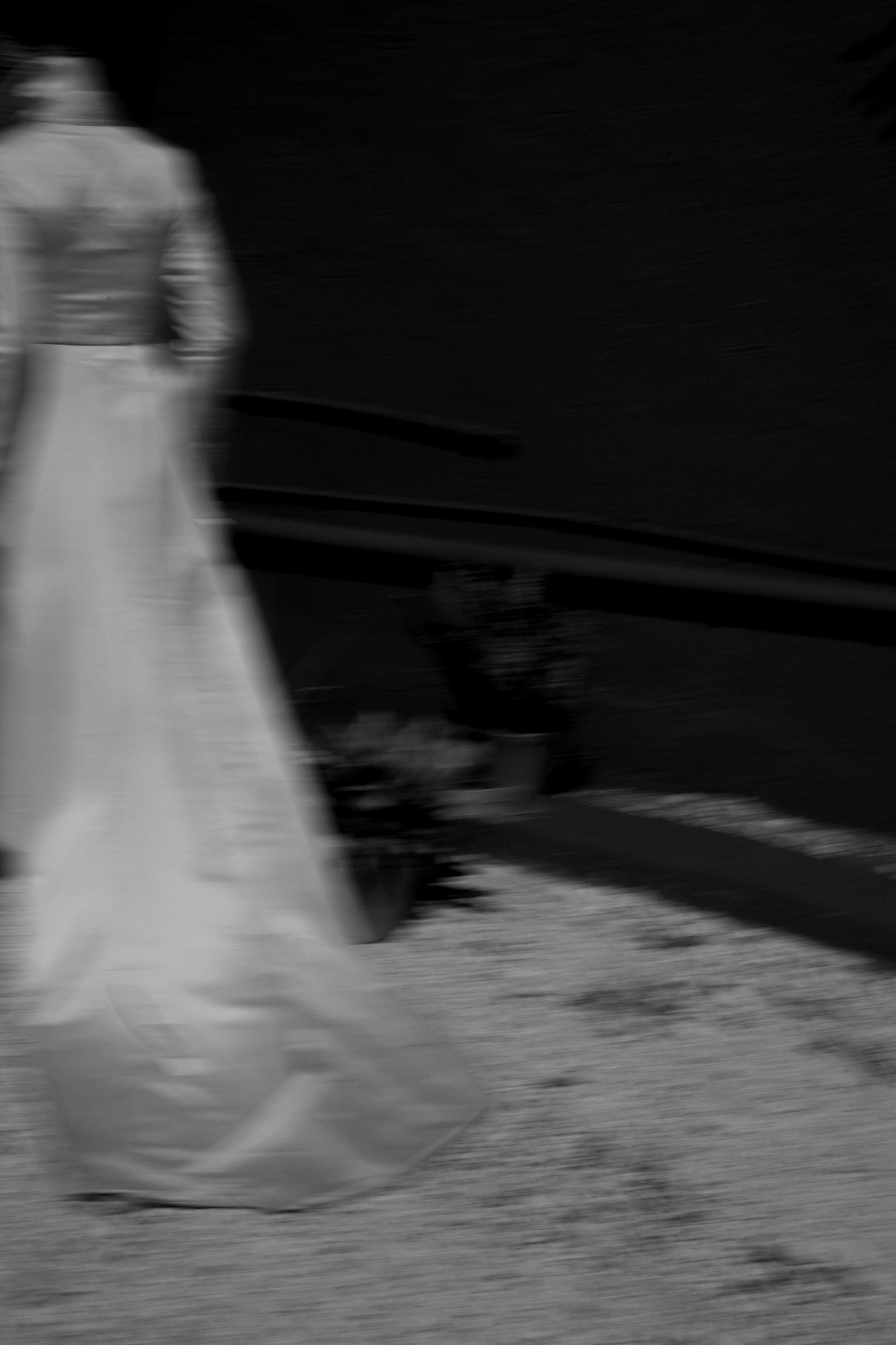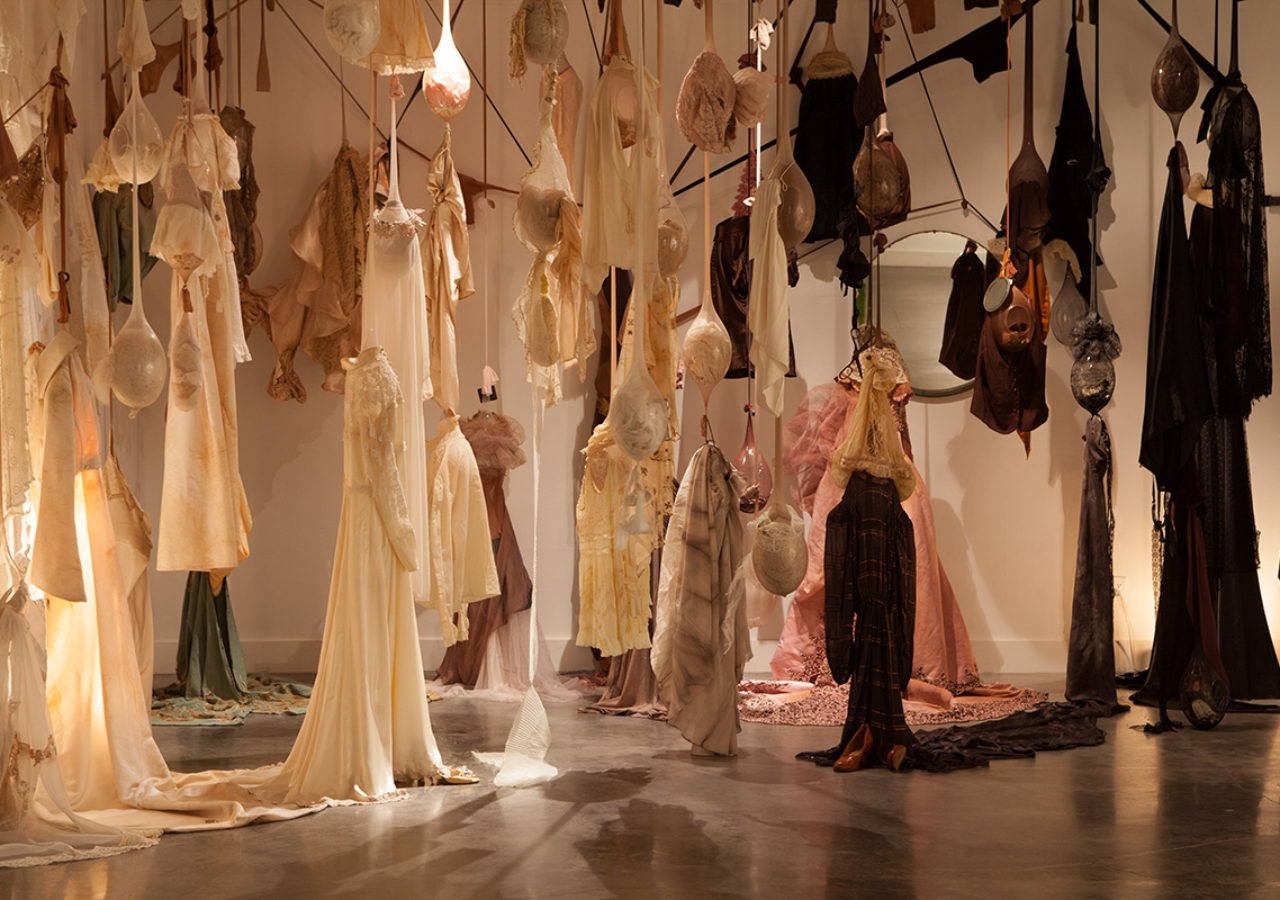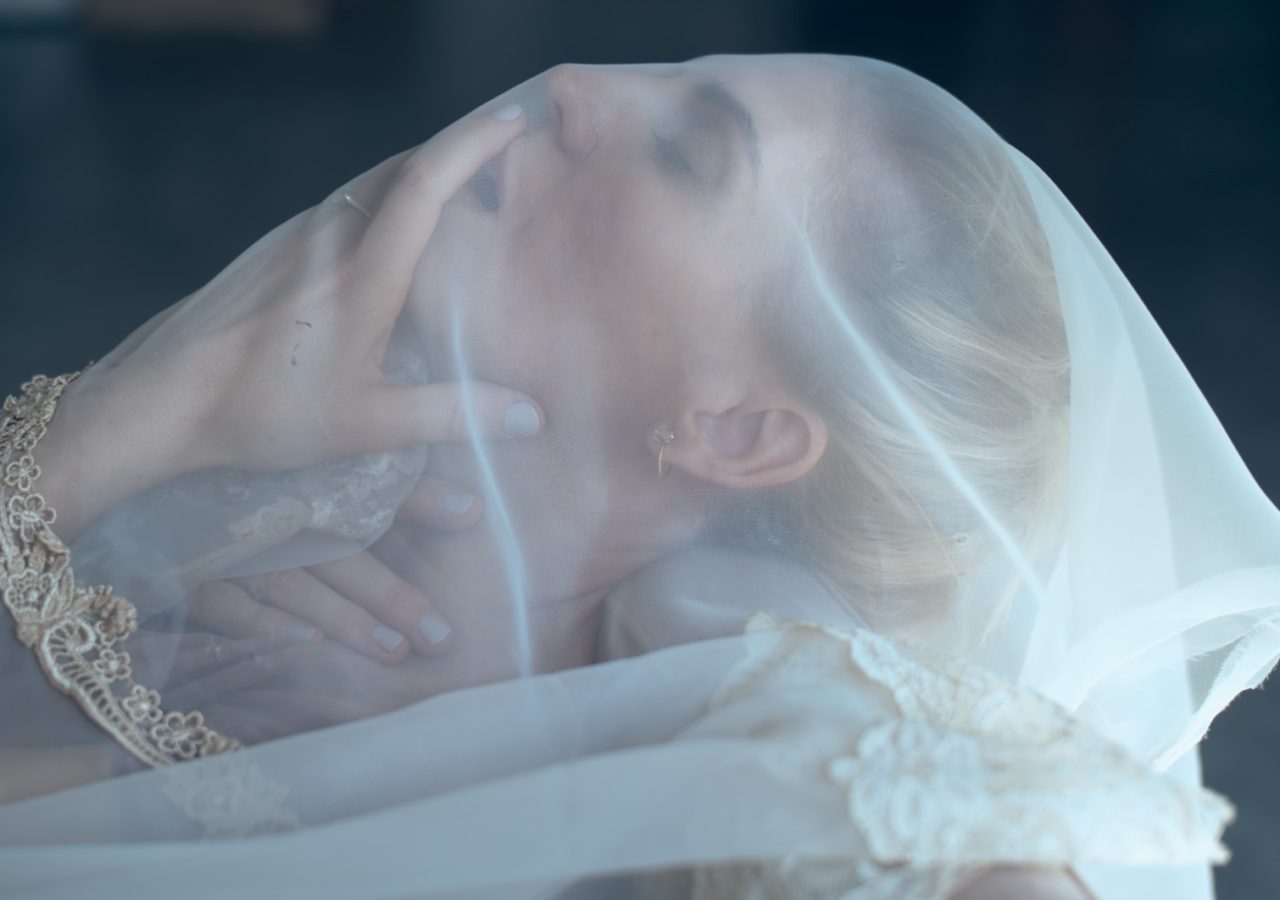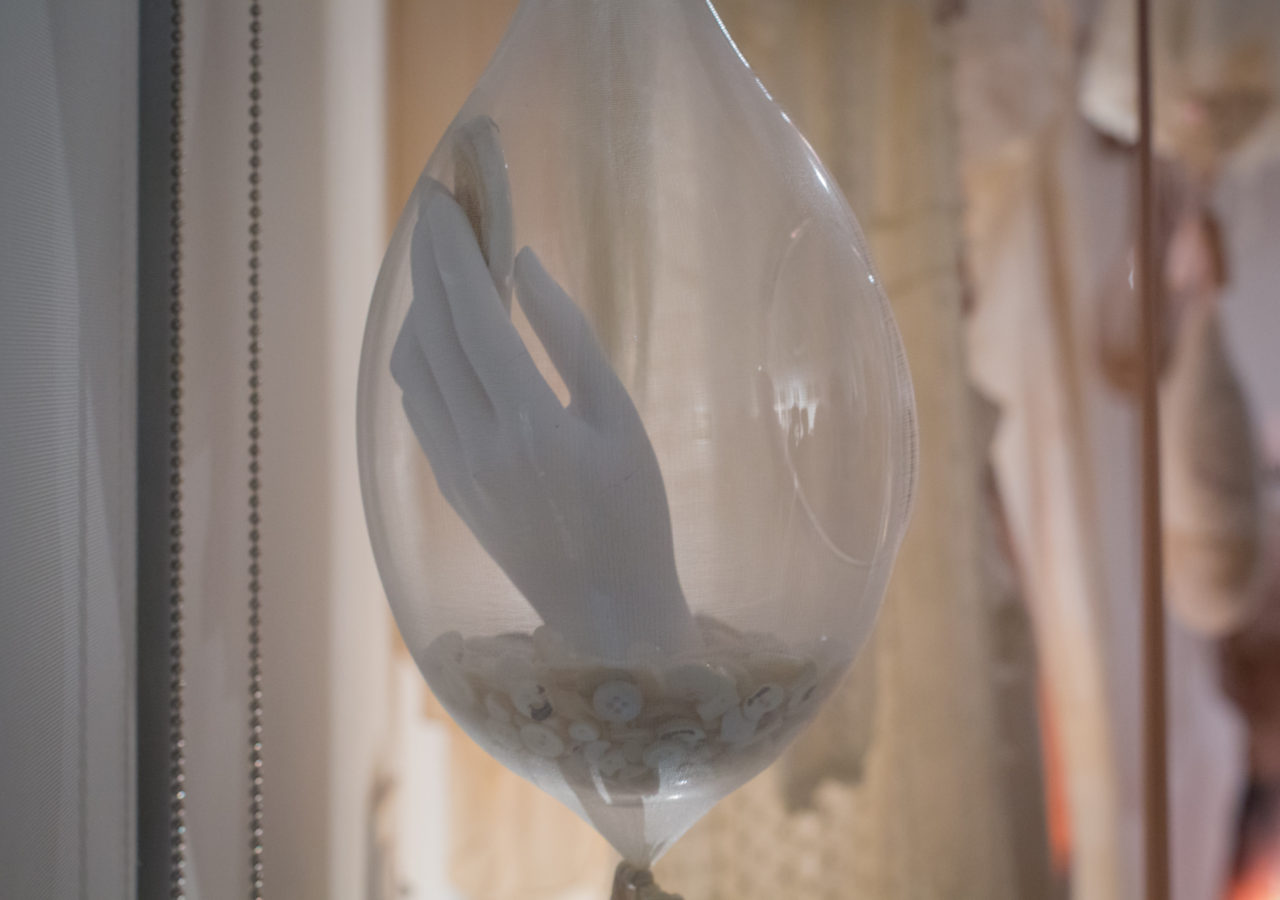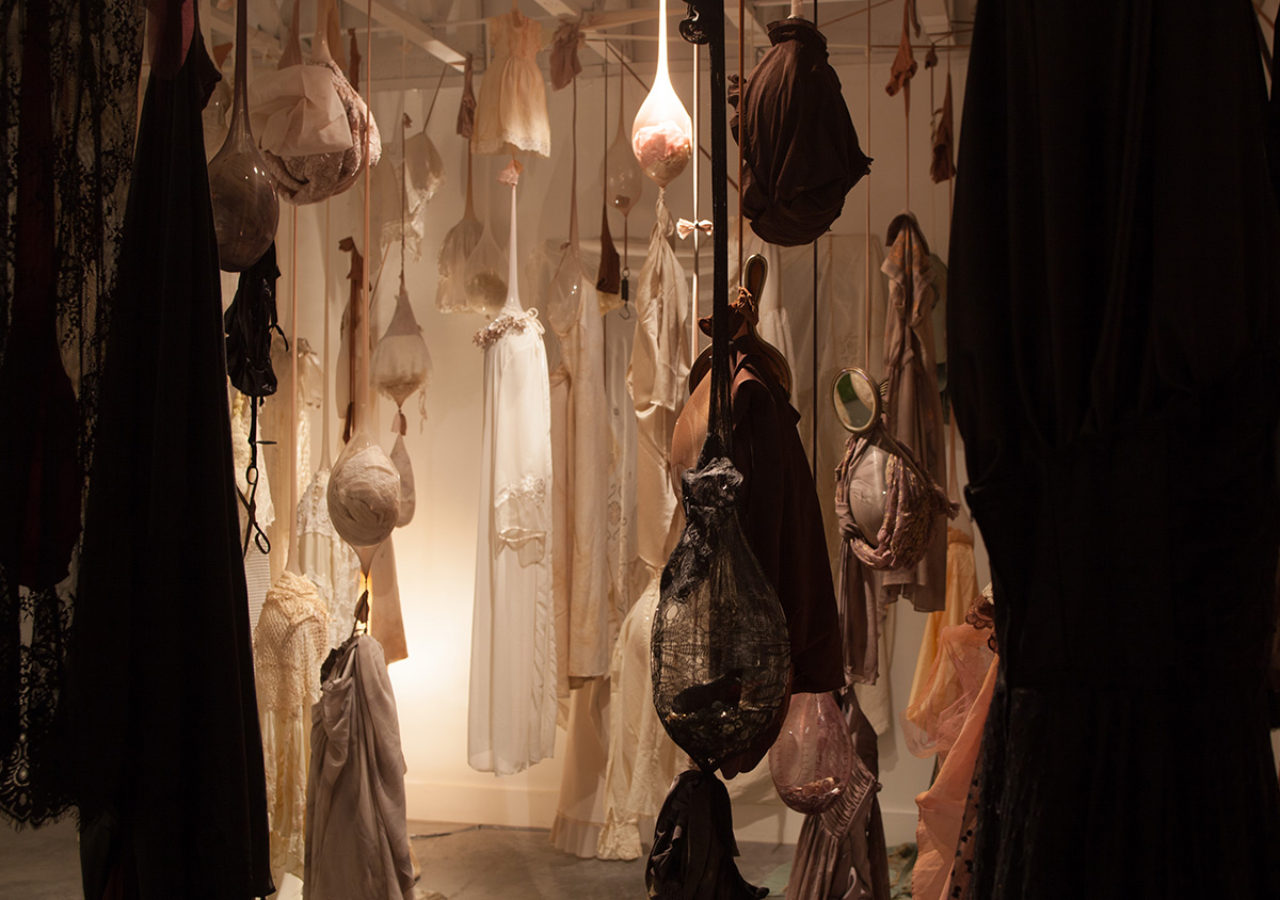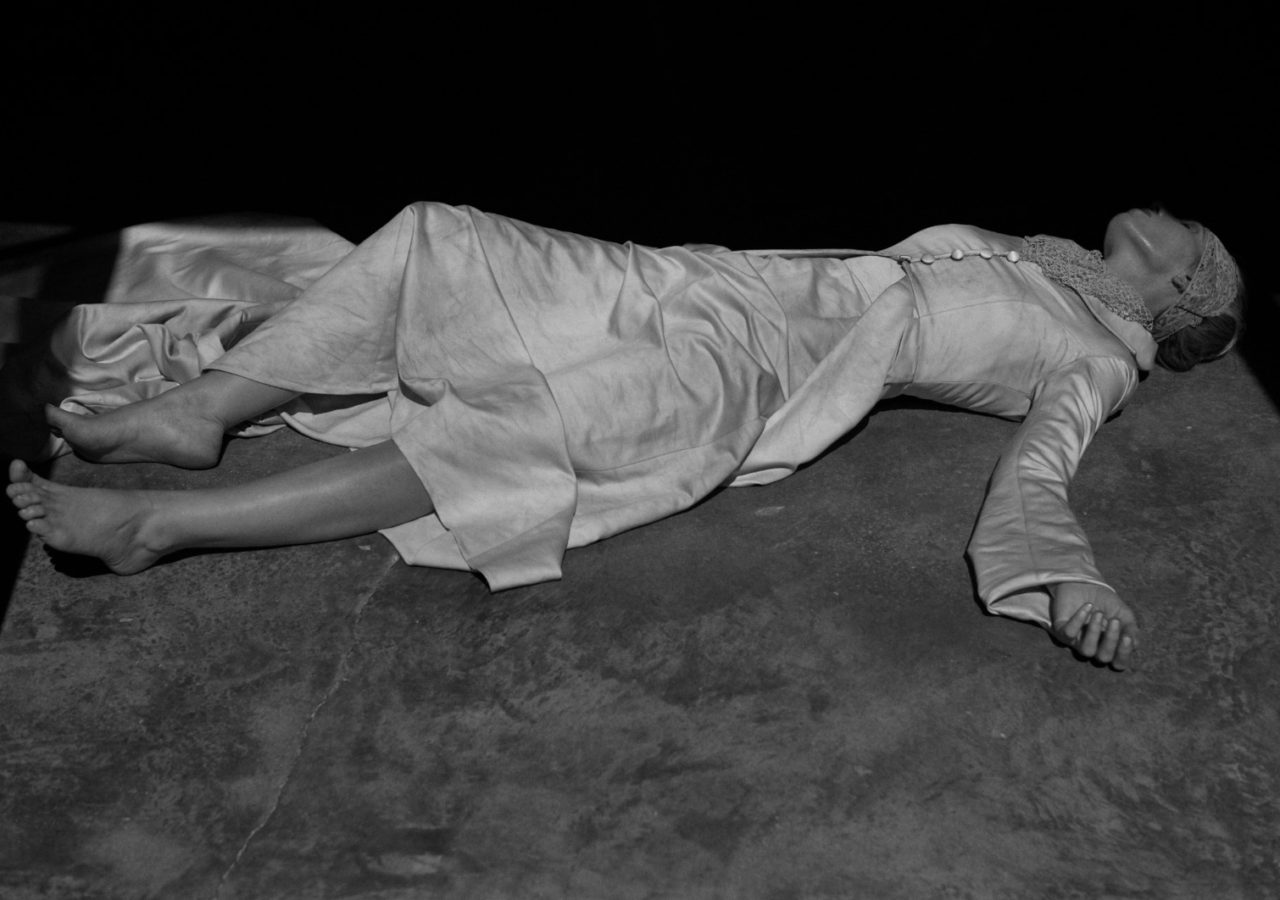Vale of Tears
In Vale of Tears (2018), she briefly turns away from video to construct an ambivalent installation. She at once pays tribute to and questions a family constellation to be rid of the burden of the past, searching for a Via Regia that leads to overcoming and heeling, to a new form of freedom. The work’s formal intelligence is remarkable. The venue turns into a dramatic space that immerses the viewer. Hanging down from the gallery’s ceiling are over eighty glass tears encased in nylon stockings bought at auction. The stockings are full of family memories, domestic memorabilia, travel souvenirs, and other remains. The objects include the artist’s first communion dress, her grandmother’s pair of scissors, the shoes and dressing gown her mother wore to the courthouse on her wedding day, several generations’ bride gowns, underwear, purses, nightgowns, hair, lockets, and her children’s bibs. A memory, here tangible, sways like the sword of Damocles above viewers’ heads; they are the ones who determine the course of the visit, as if navigating through dense columns of skin about to burst and open wounds. In its reference to Christian topography, Vale ofTears formulates a game that attests to the dangers of carrying the weight of the past, the imminence of its dissolution, but also the desire to heal, hold, and care for.The installation is also a reflection on the role of woman as keeper of memory and of the family space, as well as the coercion that that inheritance implies, even the violence inscribed on those tacit agreements. In making the tears, Surel abstracts the objects on the basis of their chromatic qualities and classifies them, as if a means to take distance. Before installing the objects, though, the artist re-lives them: she tries on the clothes, uses the tools, experiences with her senses that material memory. Photographer Omar Cruz documented the interval that seems to shape the experience of grief. In grief, objects are not mere vestiges; when the artist’s body comes into contact with them, a memory is evoked. They speak the language of things, and temporally fill a void. Cruz’s images are telling: Surel is seen through the materials (veils, fabrics, nets), kneeling like a worshipper at a shrine, finally wearing a bride’s trousseau, whose fading iconography will dominate the scene in an enlarged image. Physically metabolizing the past, accepting loss, living with that lack to bid farewell and move on. Vale of Tears stages a mortuary moment in which the artist is transformed and puts the viewer in the place of the viator, the one who visits places of memory and cemeteries, shrines, altars, and reads the inscriptions on gravestones to draw sustenance before moving on.
Bárbara Golubicki


